您好,登錄后才能下訂單哦!
您好,登錄后才能下訂單哦!
這篇文章將為大家詳細講解有關python中opencv旋轉圖片怎么用,小編覺得挺實用的,因此分享給大家做個參考,希望大家閱讀完這篇文章后可以有所收獲。
在圖像處理中,有的時候會有對圖片進行角度旋轉的處理,尤其是在計算機視覺中對于圖像擴充,旋轉角度擴充圖片是一種常見的處理。這種旋轉圖片的應用場景也比較多,比如用戶上傳圖片是豎著的時候,不好進行處理,也需要對其進行旋轉,以便后續算法處理。常見的旋轉處理有兩種方式,一種是轉化為numpy矩陣后,對numpy矩陣進行處理,另外一種是使用opencv自帶的函數進行各種變換處理,以實現旋轉角度的結果。

旋轉中常用的函數有以下幾個函數
cv2.transpose: 對圖像矩陣進行轉置處理
img = cv2.imread(origin_img_path)
img_transpose = cv2.transpose(img)
cv2.imshow('transpose', img_transpose)
cv2.waitKey(0)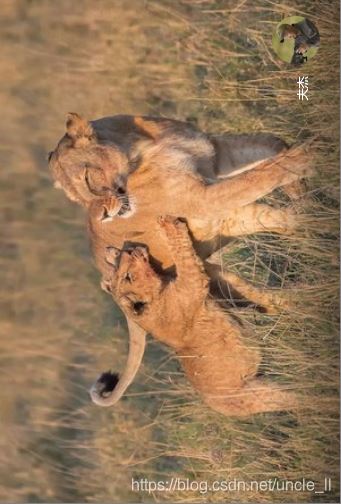
cv2.flip : 對圖像矩陣進行翻轉處理,參數可以設置為1,0,-1,分別對應著水平翻轉、垂直翻轉、水平垂直翻轉。
img = cv2.imread(origin_img_path)
img_flip = cv2.flip(img, 1)
cv2.imshow('flip', img_flip)
cv2.waitKey(0)
cv2.getRotationMatrix2D: 構建旋轉矩陣M,后續旋轉時候只需要與旋轉矩陣進行乘積即可完成旋轉操作
旋轉矩陣M

img = cv2.imread(origin_img_path) rows, cols = img.shape # 這里的第一個參數為旋轉中心,第二個為旋轉角度,第三個為旋轉后的縮放因子 # 可以通過設置旋轉中心,縮放因子以及窗口大小來防止旋轉后超出邊界的問題 M = cv2.getRotationMatrix2D((cols/2,rows/2),45,0.6)
cv2.warpAffine: 對圖像進行仿射變換,一般進行平移或者旋轉操作
img = cv2.imread(origin_img_path) cv2.warpAffine(img, M,(lengh,lengh),borderValue=(255,255,255)) # M為上面的旋轉矩陣
numpy實現旋轉一般是使用numpy.rot90對圖像進行90度倍數的旋轉操作
官方介紹:
numpy.rot90(m, k=1, axes=(0, 1))[source]Rotate an array by 90 degrees in the plane specified by axes.
Rotation direction is from the first towards the second axis.
k: Number of times the array is rotated by 90 degrees.
關鍵參數k表示旋轉90度的倍數,k的取值一般為1、2、3,分別表示旋轉90度、180度、270度;k也可以取負數,-1、-2、-3。k取正數表示逆時針旋轉,取負數表示順時針旋轉。
逆時針
使用opencv函數的轉置操作+翻轉操作實現旋轉
使用numpy.rot90實現
def rotateAntiClockWise90(img_file): # 逆時針旋轉90度
img = cv2.imread(img_file)
trans_img = cv2.transpose(img)
img90 = cv2.flip(trans_img, 0)
cv2.imshow("rotate", img90)
cv2.waitKey(0)
return img90
def totateAntiClockWise90ByNumpy(img_file): # np.rot90(img, -1) 逆時針旋轉90度
img = cv2.imread(img_file)
img90 = np.rot90(img, -1)
cv2.imshow("rotate", img90)
cv2.waitKey(0)
return img90
順時針
def rotateClockWise90(self, img_file):
img = cv2.imread(img_file)
trans_img = cv2.transpose( img )
img90 = cv2.flip(trans_img, 1)
cv2.imshow("rotate", img90)
cv2.waitKey(0)
return img90
def totateClockWise90ByNumpy(img_file): # np.rot90(img, 1) 順時針旋轉90度
img = cv2.imread(img_file)
img90 = np.rot90(img, 1)
cv2.imshow("rotate", img90)
cv2.waitKey(0)
return img90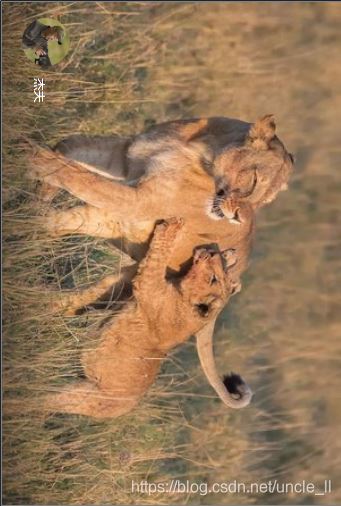
旋轉180度、270度
使用numpy.rot90實現旋轉180度、270度
180度
img180 = np.rot90(img, 2)
cv2.imshow("rotate", img180)
cv2.waitKey(0)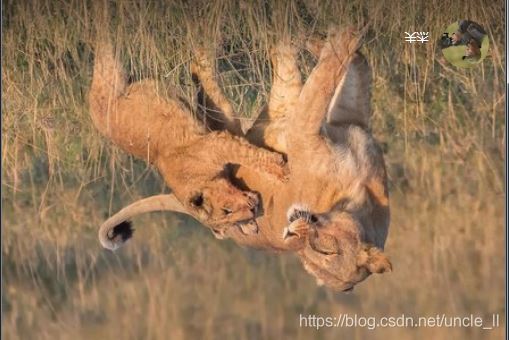
270 度
img270 = np.rot90(img, 3)
cv2.imshow("rotate", img270)
cv2.waitKey(0)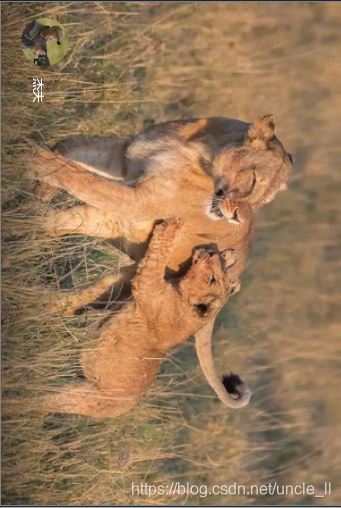
旋轉任意角度,以任意色值填充背景
import cv2
from math import *
import numpy as np
# 旋轉angle角度,缺失背景白色(255, 255, 255)填充
def rotate_bound_white_bg(image, angle):
# grab the dimensions of the image and then determine the
# center
(h, w) = image.shape[:2]
(cX, cY) = (w // 2, h // 2)
# grab the rotation matrix (applying the negative of the
# angle to rotate clockwise), then grab the sine and cosine
# (i.e., the rotation components of the matrix)
# -angle位置參數為角度參數負值表示順時針旋轉; 1.0位置參數scale是調整尺寸比例(圖像縮放參數),建議0.75
M = cv2.getRotationMatrix2D((cX, cY), -angle, 1.0)
cos = np.abs(M[0, 0])
sin = np.abs(M[0, 1])
# compute the new bounding dimensions of the image
nW = int((h * sin) + (w * cos))
nH = int((h * cos) + (w * sin))
# adjust the rotation matrix to take into account translation
M[0, 2] += (nW / 2) - cX
M[1, 2] += (nH / 2) - cY
# perform the actual rotation and return the image
# borderValue 缺失背景填充色彩,此處為白色,可自定義
return cv2.warpAffine(image, M, (nW, nH),borderValue=(255,255,255))
# borderValue 缺省,默認是黑色(0, 0 , 0)
# return cv2.warpAffine(image, M, (nW, nH))
img = cv2.imread("dog.png")
imgRotation = rotate_bound_white_bg(img, 45)
cv2.imshow("img",img)
cv2.imshow("imgRotation",imgRotation)
cv2.waitKey(0)45度
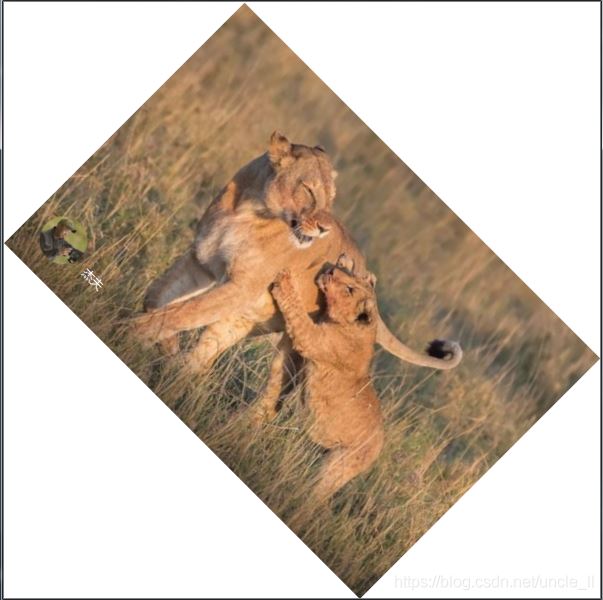
60度
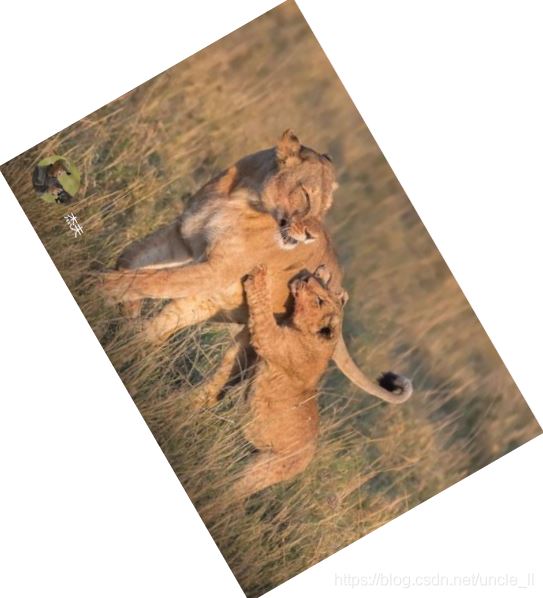
關于“python中opencv旋轉圖片怎么用”這篇文章就分享到這里了,希望以上內容可以對大家有一定的幫助,使各位可以學到更多知識,如果覺得文章不錯,請把它分享出去讓更多的人看到。
免責聲明:本站發布的內容(圖片、視頻和文字)以原創、轉載和分享為主,文章觀點不代表本網站立場,如果涉及侵權請聯系站長郵箱:is@yisu.com進行舉報,并提供相關證據,一經查實,將立刻刪除涉嫌侵權內容。